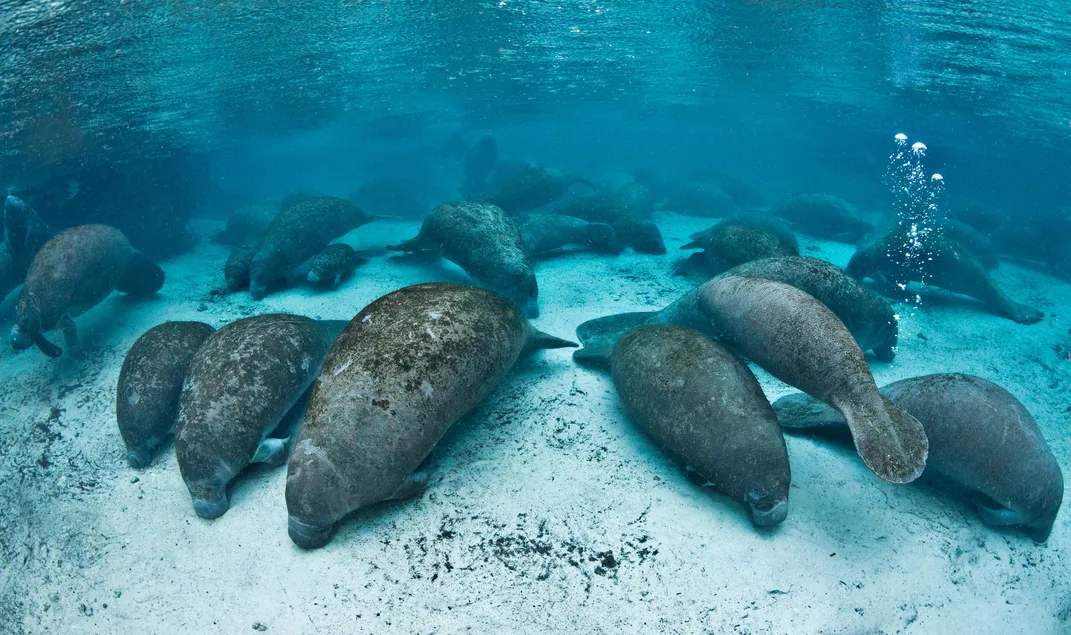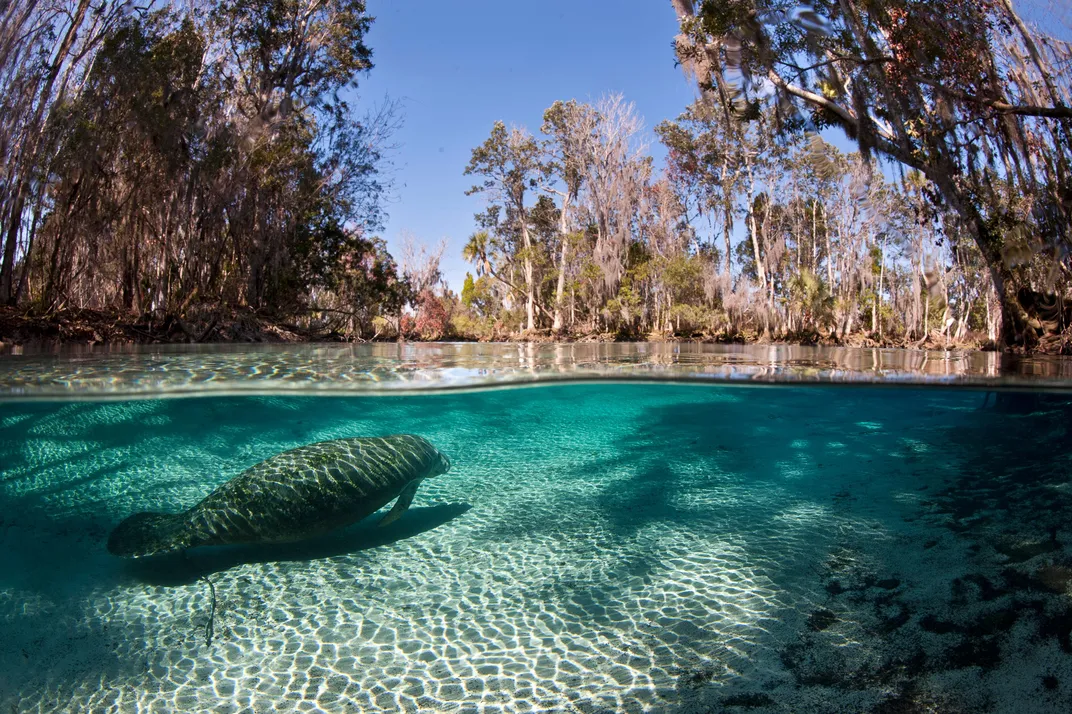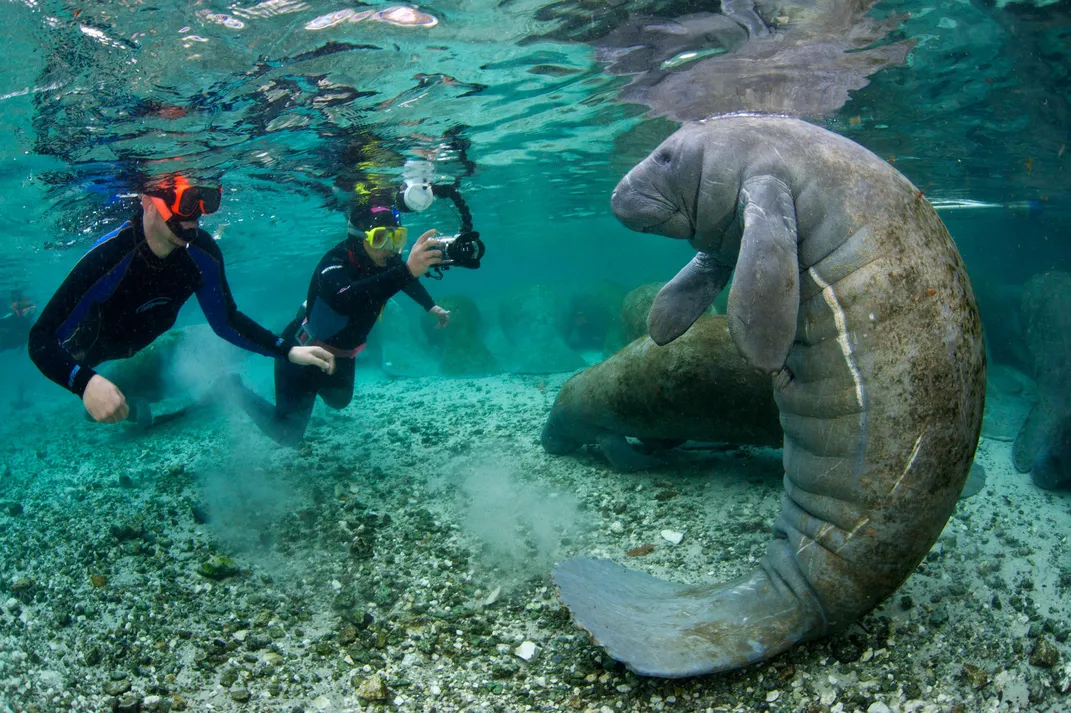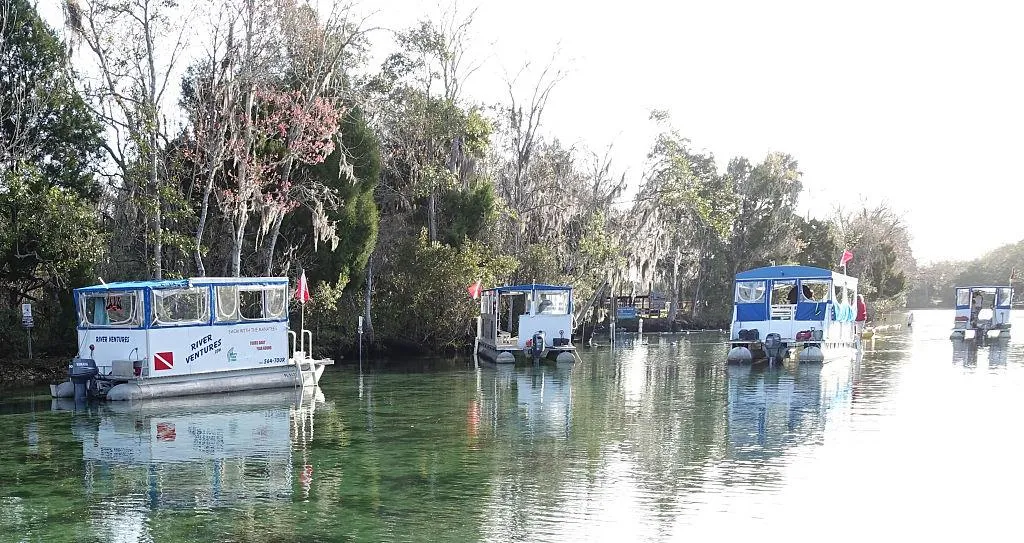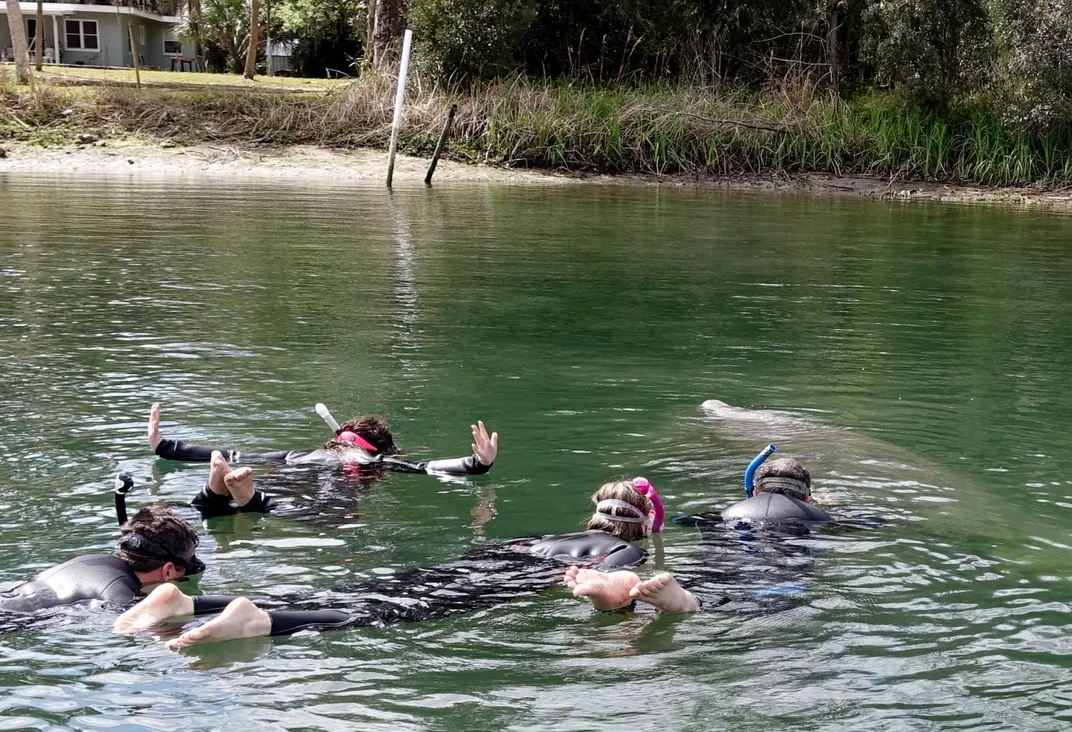There’s Only One Place in the United States Where It’s Legal to Swim With Wild Manatees
In Citrus County, Florida, hundreds of the gentle giants winter in the warm waters of Crystal River
Much like other mammals (humans included), at the first sign of winter, manatees seek out a warm locale to wait out winter’s wrath. For West Indian manatees, their go-to spot is Crystal River, Florida.
For generations, West Indian manatees (also known by their subspecies, Florida manatees) have been following the same migratory pattern from as far north as New England to this stretch of warm water located 90 miles west of Orlando and several miles inland from Crystal Bay and the Gulf of Mexico. This is where these herbivores will stay from roughly November through March, spending much of their time munching on sea grass and other shoreline vegetation (they’ll consume as much as 10 percent of their body weight a day, amounting to between 100 and 300 pounds of vegetation) while floating languidly in the warm waters of Crystal River and Kings Bay, which average 72 degrees thanks to their shallow nature (manatees can't tolerate water temperatures when they dip below 68 degrees). The Crystal River area is considered the largest natural winter refuge in the world for manatees and is comprised of 70 springs, including Three Sisters Springs, where between 400 and 500 manatees have been sighted during the winter in recent years thanks to its ample vegetation and temperate waters.
Because of their calm demeanor and sheer cuteness—they’re a distant relative to elephants—seeing one of these gentle giants in the wild has become a bucket-list item for people around the world. But because they’re protected under the Endangered Species Act, and the U.S. Fish and Wildlife Service considers them a threated species (there are upwards of 6,300 manatees in Florida today, a significant increase from 1,267 in 1991). Citrus County is the only place in the United States where people can legally swim with wild manatees in their natural habitat.
There are numerous outfitters in Citrus County offering snorkeling excursions that get people up close to manatees in a safe and legal manner, but one of the most established is River Ventures, which has been providing guided snorkeling tours of Crystal River National Wildlife Refuge, an 80-acre area established in 1983 to protect the manatees, year-round for the past 12 years.
A typical tour with River Ventures lasts three hours and begins with an on-land educational briefing about the species that includes tips on swimming with them and information about the Crystal River ecosystem. Afterwards, a Coast Guard-certified Master Captain whisks snorkelers onboard a pontoon boat to some of the manatees’ favorite haunts along the Crystal River, including shallow coves with plenty of vegetation. (River Ventures supplies all gear, including a mask, snorkel and wetsuit.) On average, about 400 manatees spend their winters in Crystal River from November through March, according to River Ventures. Most migrate north, but there are known to be some stragglers who stay in the area during the summer.
“When it’s cold like it has been [in mid March], manatees are everywhere, so it might be only five minutes before you’re in the water with them,” says Brandie Wooten, the operations manager for River Ventures. “In the summer or during transitional seasons, it can be a little more challenging and it might take 30 minutes to an hour to find one.”
While swimming with manatees may seem like a relatively straightforward activity, there are guidelines that snorkelers must follow by law. Simply put, River Ventures promotes “passive interaction” that abides by the rules and regulations set out by the Florida Manatee Sanctuary Act 1978, which states that “it is unlawful for any person, at any time, intentionally or negligently, to annoy, molest, harass, or disturb any manatee.” In other words, don’t even think about touching, chasing or feeding them.
“Our motto is if you want to swim with the manatees, you have to act like a manatee,” Wooten says. “Kicking and splashing and making noise will drive them away and lessen your chances of seeing one up close. Manatees spend a good portion of their life in a position called logging, where they just kind of float around, so [during an excursion], we’ll just float at the surface and use our wetsuits for buoyancy. Everyone also gets a flotation device to wear around their waists, and that helps you from kicking beneath the water. So basically you’ll position yourself in front of animal, freeze and float. That way if they want to initiate contact, they can come very close, but if they’re eating or sleeping, we won’t disturb them.”
If you want to see manatees in Crystal River this season, there is still time to do it. But soon, most will have begun migrating north for the spring and summer and won't be back until November. River Ventures does offer tours year-round, just be aware that there are fewer manatees to see.
